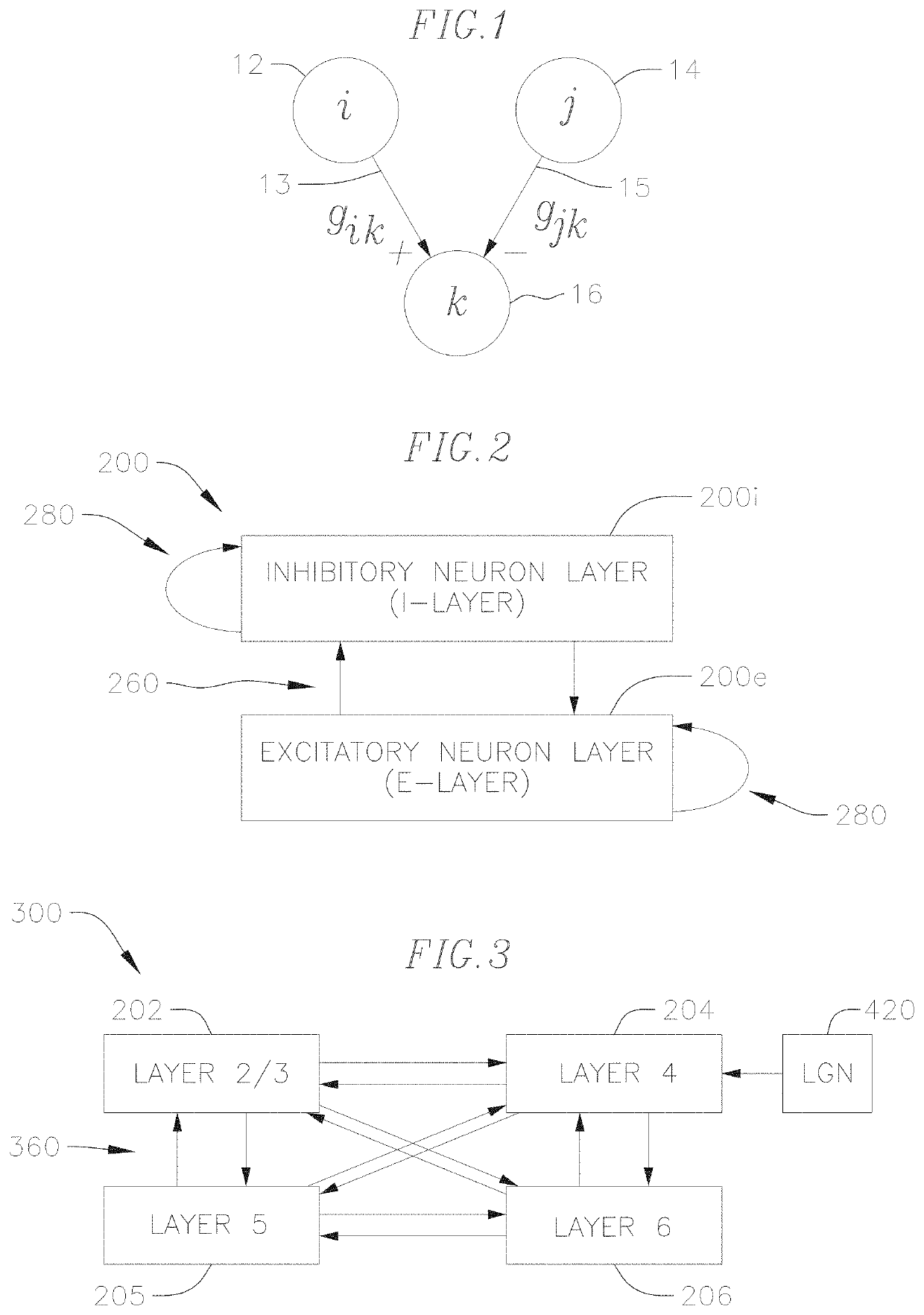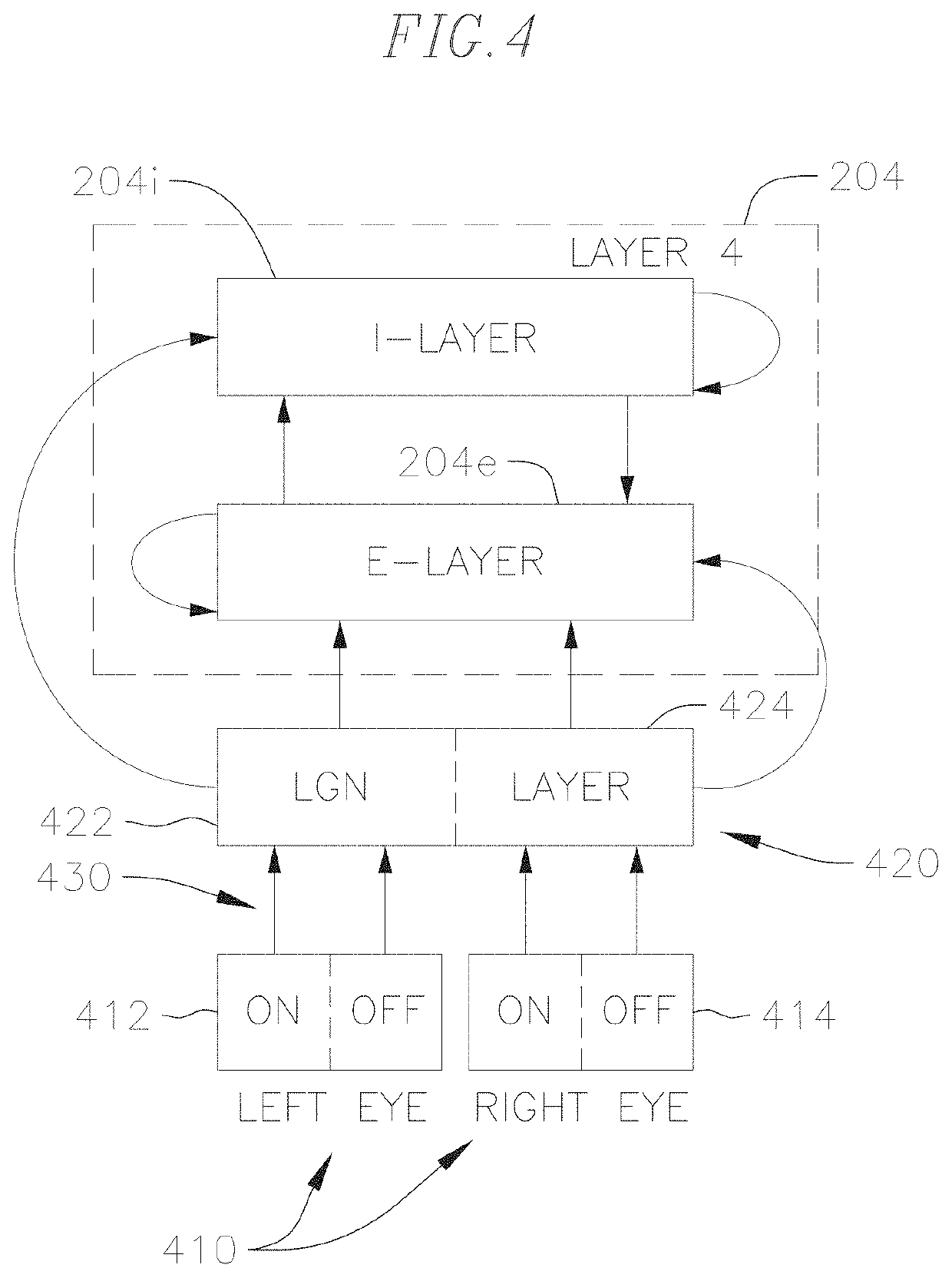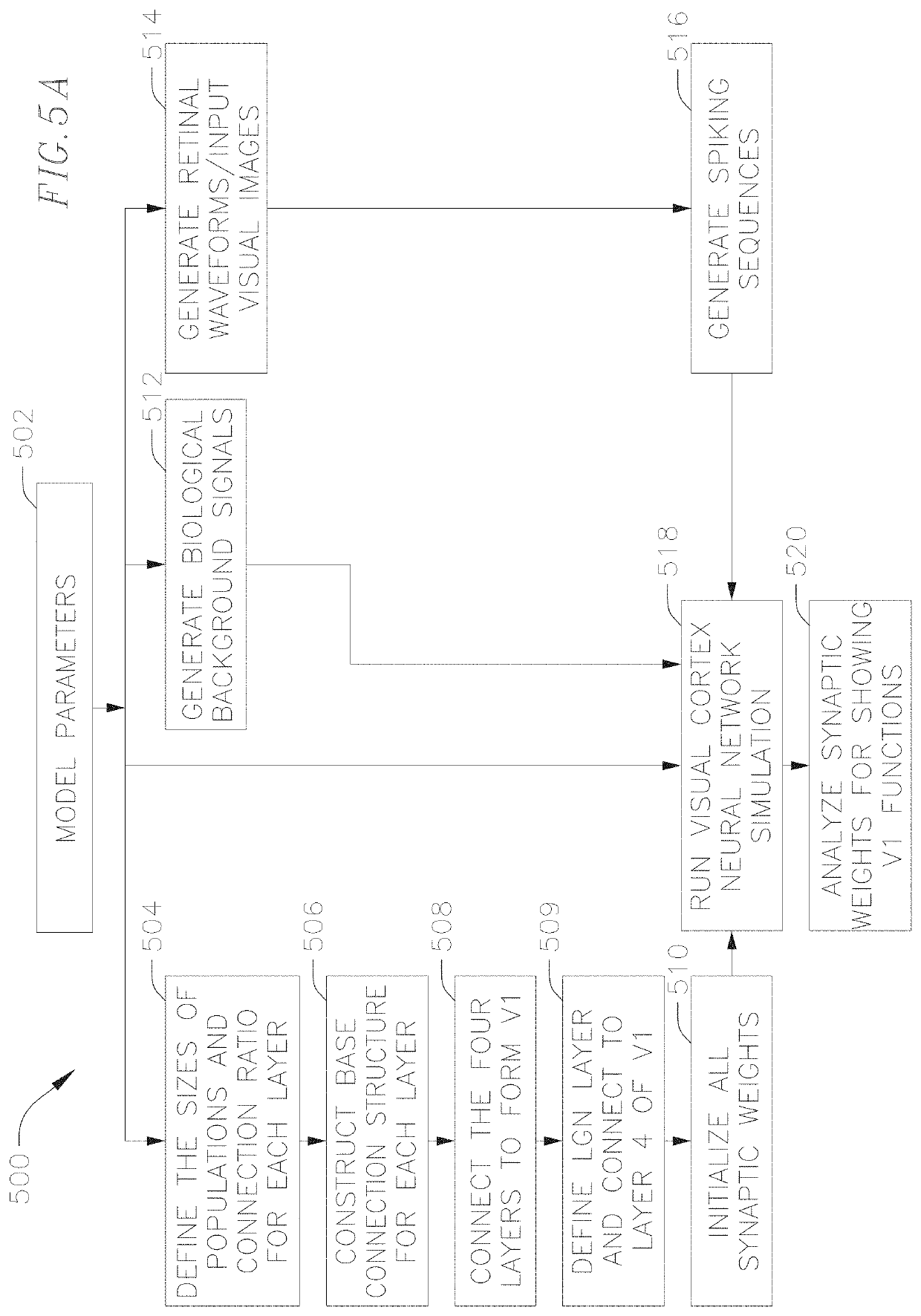System and method of modeling visual perception V1 area
a visual perception and system technology, applied in the field of methods for modeling the v1 visual perception area, can solve problems such as difficulty in creating accurate and performant models
- Summary
- Abstract
- Description
- Claims
- Application Information
AI Technical Summary
Benefits of technology
Problems solved by technology
Method used
Image
Examples
Embodiment Construction
[0047]In the following detailed description, only certain exemplary embodiments of the present invention are shown and described, by way of illustration. As those skilled in the art would recognize, the invention may be embodied in many different forms and should not be construed as being limited to the embodiments set forth herein. Like reference numerals designate like elements throughout the specification.
[0048]Aspects of embodiments of the present invention are directed to systems and methods for emulating the four layers of the primary visual cortex V1 at a spiking neuron level in order to emulate the full functionalities of V1. The four layers include: Layer 2 / 3 or supragranular layer, which contain small and medium-size pyramidal neurons; Layer 4 or granular layer, which contains stellate and pyramidal neurons; Layer 5 or first infragranular layer, which contains large pyramidal neurons; and Layer 6 or second infragranular layer, which contains large pyramidal neurons and spi...
PUM
 Login to View More
Login to View More Abstract
Description
Claims
Application Information
 Login to View More
Login to View More - R&D
- Intellectual Property
- Life Sciences
- Materials
- Tech Scout
- Unparalleled Data Quality
- Higher Quality Content
- 60% Fewer Hallucinations
Browse by: Latest US Patents, China's latest patents, Technical Efficacy Thesaurus, Application Domain, Technology Topic, Popular Technical Reports.
© 2025 PatSnap. All rights reserved.Legal|Privacy policy|Modern Slavery Act Transparency Statement|Sitemap|About US| Contact US: help@patsnap.com



